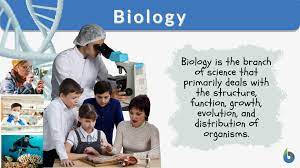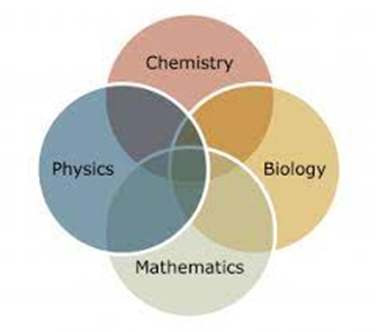v IMPORTANT TERM RELATED TO CLASSIFICATION/TAONOMY
01 Nomenclature: It is the process of giving scientific names to the organisms
02 Classification: It is the process of grouping animals and plants into convenient categories on the basis of certain observation traits.
03 Identification: It is determination of correct position of an organism in the classification.
04 Taxonomy: It is the study of the process of classification.
05 Systematic: This includes the identification, nomenclature and classification of organisms based on various parameters.
06 New systematic: This covers systematic studies considering evolutionary relationship including other branches like molecular biology, cytology, genetics, and biochemistry etc.
v HISTORY OF CLASSIFICATION
01 Hippocrates - he classified animal into various groups like insect’s fishes and birds, etc.
02 Aristotle – known as father of zoology/biology. He had written Historia animalium.
03 Theophrastus- known as father of botany.
04 John Ray (1886) a British botanist.
05 Carrolus Linnaeus – a Swedish naturalist – Father of taxonomy. He coined the terms ‘class’ and systematics. Taxonomy was given by AP De condolle. He published Systema Naturae, Genera Plantarum and Species plantarum (1753)
v ROLE OF NOMENCLATUR
01 In bionomial nomenclature each scientific name has 2 component.
I. Genetic name (Genus)
II. Specific name/epithet (Species)
02 The generic name begins with capital letter, whereas the specific name with small letter.
03 Both the generic and specific names are separately underlined to indicate their Latin origin.
04 The first (generic) name is usually a noun, whereas the second (species) is an adjective.
05 The scientific name of the organism is generally followed by the name (full or abbreviate) of the person/author who first describe the species. However if the species, after its first publication is transferred to any other genus, or the generic name is change, the first author’s name is given in parenthesis (brackets). If the specific name is given in the honor of a person, then this name ends in ‘i’ if the person is male or in ‘ae’ if the honor person is female.
06 Tautonym - it is a bionomial name in which the names of genus and species are the same.
07 Julian Huxley – introduced the term ‘New systematics’
08 Whittaker (1969) – introduced 5 kingdom classification.
vINTRODUCTION
The basic unit of biological classification is known as species. According to the biological concept of the species they can be define as group of natural population of animals and plants, whose members can interbreed among themselves and reproductively isolated from other such groups. It is not applicable to fossils an asexually reproducing organisms as they cannot interbreed. So far, there are more than 1.2 million animal species and more than 0.5 million plants species have been identified and described.
As different there are so many species of living organisms on earth and they are known by different name in different geographical areas. Moreover the scientific community from the time of Aristotle always tried to systemized method develop of classifying these species taking into account various parameters like, morphology, biochemical metabolic reaction and generic evolution.
v HISTORY AND TYPES OF CLASSIFICAION
01 Artificial system of classification: All taxonomists from Aristotle to Linnaeus, classified organisms on the basis of external observable (morphological) characters like floral structure (number of stamens), root modification, leaf venation, etc, In this system no weightage was given to natural an phylogenetic relationship. Such system is based on one or a few superficial similarities. This is an arbitrary system of classification. Linnaeus also used such system of classification. This system may also be based upon habit an habitats of the organisms.
02 Natural system classification: It uses more number of characters and is based upon natural affinities using homology and comparative study. Bentham-Hooker use this system of classification for angiosperms (seed producing plats).
03 Numerical taxonomy (phenetics) or quantitative taxonomy: This system uses numerical method for evaluation the similarities and differences between the species. This uses maximum number of characters. This system uses computer analysis. This is known as Adansonian system of classification as it was first described by Adanson (1963).
04 phylogenetic classification (cladistics): This system of classification is based upon evolutionary relationship and also uses morphological characters origin an evolution for classifying organisms. The family tree so found in this system is known as Cladogram. This classification was proposed by Hutchinson. A. Engler and K. pranti published’ phylogenetic system of classification’ in plants.
05 Karyotaxonomy: This system of classification uses information like chromosome number, structure of chromosomes, size and shape of chromosomes and the behavior of chromosomes during meiosis
06 Chemotaxonomy: This system is based on chemical products, particularly secondary metabolites.
07 Experimental taxonomy: In this classification relationship is determined by the genetics and breeding experiments.
08 Biochemical taxonomy: It is based on biochemistry of various chemicals like hormones and pheromones etc.
09 New systematics: This covers systematic studies considering evolutionary relationship and other parameters like molecular biology, cytology, genetics, biochemistry, etc.
v BASIC CONCEPTS OF TAXONOMIC HIERARCHY
There are seven basic categories of hierarchy:
01 Kingdom
02 Phylum
03 Class
04 Order
05 Family
06 Genus
07 Species
The term ‘Taxon’ is used to any rank or category of the classification. Hence, the dogs, carnivorous mammals and animals are all taxa at different levels of hierarchy. The term ‘taxon’ for animals was given by Adolf Meyer (1926)
01 Species: It is lowest category in basic taxonomic hierarchy and has the maximum common characteristics with other species under the same genus.in genus Panther, there are several species.
02 Genus: The genus is an aggregate or a group of closely related species. The Taxon genus has more common characteristics with other genera than the higher ranks.
03 Family: It is the group of closely related genera, and has less common characteristics than species or genus rank.
04 Order: It is a higher taxon and is the assemblage of families having similar characteristics, however, the common characteristics will be fewer than at family or genus level in mammals the common order is primates.
05 Class: It is a group of related orders. The lizards, birds and cattle belong to class Reptilia.
06 Phylum: The classes with similar features are grouped into phylum share very few common characteristics with other phyla. The common characteristics of phylum chordata are dorsal tubular nervous system. Notochord and the pharyngeal gill slits at some stage of life cycle. Other phyla are Annelida, Artropoda and Mollusca, erc.
07 Kingdom: The phyla are grouped into still broader categories called kingdom.
Thus the above taxonomic hierarchy as we move from lower to higher rank, the number of common characteristics go on decreasing. Lower the Taxon more are the common characteristics and higher the taxon the fewer are the common features.
|
Example of taxonomy of human |
|
|||||
|
Common name |
Biological name |
Phylum |
Class |
Order |
Family |
Genus |
|
Human |
Homosapiens |
Chordate |
Mammalia |
Primates |
Hominidae |
Homo |





0 Comments